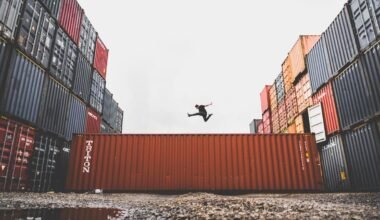Manufacturing lines need to maintain consistent flow while handling various container types, and improper accumulation settings can lead to costly bottlenecks and product damage. How can you optimize accumulation table settings for different container types?
The optimal settings depend primarily on the container material, weight, and shape. Light plastic containers typically require 40-60% back pressure, while glass containers need 20-30% back pressure, with belt speeds adjusted to 25-35 feet per minute for both.
While these baseline settings are a good starting point, the full story is more complex since factors like environmental conditions, line speed requirements, and specific product characteristics can significantly impact optimal accumulation settings. Understanding these variables will help you fine-tune your settings for maximum efficiency and minimal product damage.
What Environmental Factors Affect Accumulation Table Performance?
Temperature and humidity can significantly impact container behavior on accumulation tables. In high-humidity environments, containers may stick together more easily, requiring reduced back pressure settings by 5-10% from baseline recommendations. Temperature fluctuations can affect plastic container rigidity, with higher temperatures potentially requiring lower belt speeds to prevent deformation.
Air circulation from nearby HVAC systems or open doors can also influence container movement, especially with lighter containers. In these cases, consider installing side guides or adjusting them closer to create a more controlled environment for container flow.
How Do Line Speed Requirements Change Accumulation Settings?
Higher production speeds demand a careful balance between accumulation pressure and throughput. When running at speeds above 40 feet per minute, back pressure should be reduced by approximately 15% to prevent container damage. Additionally, longer accumulation tables may require zone-based pressure adjustments, with gradually decreasing pressure from the discharge end to the infeed.
The number of containers accumulated also plays a crucial role. For high-speed lines accumulating more than 50 containers, consider implementing progressive pressure zones where each zone operates at 5-7% lower pressure than the previous one.
What Special Considerations Apply To Unique Product Characteristics?
Non-standard container shapes, such as oval or rectangular bottles, require specialized settings. These containers should typically run at 20% lower belt speeds than round containers of similar weight. For containers with special coatings or labels, back pressure should be reduced by 25-30% to prevent surface damage.
Container fill level also impacts optimal settings. Full containers generally require 10-15% lower back pressure than empty ones, while partially filled containers may need variable pressure zones to account for weight distribution changes during accumulation.
How Do Mixed Container Types Impact Accumulation Table Configuration?
Running different container types simultaneously requires a careful compromise in settings. The general rule is to optimize for the most delicate or unstable container type present. If mixing plastic and glass containers, use the lower back pressure setting (20-30%) recommended for glass, while potentially adding lane dividers to prevent cross-container contact.
Consider implementing changeover protocols that include preset configurations for common container combinations. This can reduce setup time and minimize the risk of damage when switching between product types.
What Maintenance Practices Ensure Optimal Accumulation Performance?
Regular maintenance significantly impacts accumulation table effectiveness. Belt tension should be checked weekly and adjusted to maintain a consistent coefficient of friction – typically between 0.18 and 0.22 for most applications. Clean belts every 8-12 hours of operation to prevent buildup that could affect container movement.
Monitor wear patterns on side guides and belt surfaces, as uneven wear can create pressure inconsistencies. Replace belts when friction coefficients deviate more than 15% from specifications or when visible wear patterns emerge. Additionally, checking and calibrating pressure sensors every 3-6 months ensures accurate pressure control across accumulation zones.
Bearings and drive components should be inspected monthly, with particular attention to any unusual noise or vibration that could indicate developing issues. These mechanical problems can create subtle variations in belt speed or pressure that affect accumulation performance.
Conclusion
Start by documenting your current accumulation table settings for each container type you run, then implement a systematic testing process to optimize these settings using the baseline recommendations provided. Over the course of a week, make small adjustments (5% increments) to back pressure and belt speed while monitoring product quality and line efficiency, documenting the results to create your facility’s optimal settings guide.



